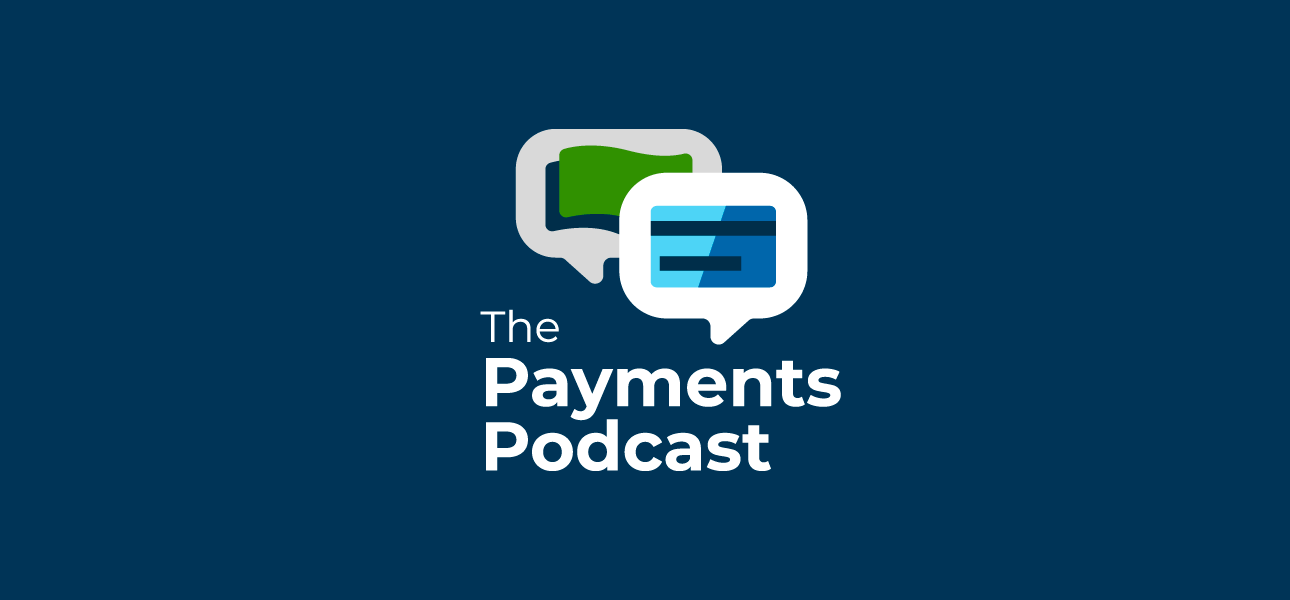Subscribe Today
The cheque has evolved over the last ten years, as expected.
This episode on the payments podcast is reviewing how cheques have changed to keep up to date with the digital consumer that expects payments fast. But, what does this mean for the security of cheques which was once almost impenetrable? Spoiler alert, it’s good news for the fraudsters
Podcast Transcript
Rich Williams: The introduction of the cheque in the 17th century was a striking act of creativity because it fundamentally changed the way businesses could pay and get paid. Fast forward to today, how are cheques still being used and what differences can we observe between the new and old approach to this payment method? Hello, I'm Rich Williams, host of The Payments Podcast and to discuss the evolution of the cheque, I'm delighted to be joined by Andrew Scarborough, Commercial Product Manager at Bottomline. Hi, Andrew, and welcome to the show.
Andrew: Morning, Rich.
Rich Williams: Let’s jump straight into it, Andrew. Now, with Bacs, Faster Payments and consumer banking so popular nowadays, what role does the humble cheque play in the UK payments landscape?
Andrew: Well, the number of cheques cleared in 2019 was about 270,000,000 so the number of cheques issued is declining, and it declines at about 15% per year. But if you think about it, that is still 1,000,000 cheques per working day. For many companies and customers cheques remain a convenient way of making a payment when you don’t have the payee’s bank account details, or if they don’t want to share them with you.
Rich Williams: I still get one cheque a year from my gran on my birthday, and I think that is probably common for many us.
Andrew: Yes, that is a great example where cheques are still used. Many of the older generation aren’t comfortable with internet or mobile banking and prefer to use paper. Some of them don’t even have PCs or electronic devices and that applies both to the payments they make and the payments they receive as well. You'll also find that for some people, they prefer a cheque as it gives them more flexibility than a payment directly into their bank account.
Rich Williams: Moving away from consumers then, what about companies? What is their approach to cheques?
Andrew: Well, it is difficult to say but my estimate is about half the cheques issued every year are from companies as opposed to consumers. Quite often, consumers are ahead of corporates in many cases, for a number of reasons. Companies have to make large-scale payments and cheques can be a very convenient way of paying, especially, for example, if it is to a lot of people in a short period of time. You’ll see, for example, quite a lot in the press about large refund programmes at the moment and companies using cheques to make those payments.
Rich Williams: For a business using a cheque payment method, they get to hold on to their cash for longer, is that the case?
Andrew: Certainly, that may have been the case in the past but that is not true any longer. Cheque clearing times have been reduced now. In fact, a cheque is cleared faster than a standard Bacs payment. I think many companies would prefer to have a more accurate view of their cash position, rather than wait for cheques to be presented by their customers and cleared through the banks.
Rich Williams: That is really surprising to hear that a cheque can clear quicker than a Bacs payment. I'm sure that would be news to many of the listeners, it certainly is to me. How have these cheque clearing times been reduced, Andrew?
Andrew: To make the process more efficient for the banks they launched a new system called ‘image clearing’ in 2018. The general consensus was that, “Cheques are going to be with us for a while longer, so let’s modernise the system like they have done in other countries.” Because a lot of paper has been removed from the system, the cheques that are presented on day one will be cleared by the next working day.
Rich Williams: Now, I've heard of something called ‘cheque image clearing.’ How exactly does that work?
Andrew: Well, instead of the paper actually being sent to the clearing companies and the banks, an image of the cheque is now submitted to the payer’s bank. The image is created either by a bank themselves when someone takes the paper to the bank, by companies, especially companies who are receiving lots of cheques every day, and also consumers, and then, it is the image that is read by the clearing system who recommend a pay or no pay decision to the paying bank.
Rich Williams: Applying that to a real-life scenario as I used earlier, Andrew, what is the easiest way for me to cash my gran’s cheque?
Andrew: Well, most banks now support remote deposit for cheques, meaning that you can scan your cheque with your mobile banking application and your camera, and then submit that to your bank who will then forward it on to the paying bank. Actually, that is quite a neat feature given the problems people have been having taking cheques to the bank recently, over the last three months in lockdown.
Rich Williams: Something which is becoming more and more relevant these days, and people having greater awareness of it, is the security of a financial transaction. Is this method of clearing for cheques using images secure?
Andrew: That is a great question, Rich. If you are familiar with any kind of paper document, even cash, there are many security features that help prevent fraudsters from either producing counterfeit documents or even trying to alter the details on a real document. If you think of cash or cheques, or even tickets and vouchers, they are often printed on watermarked paper. They have holograms, security inks, a range of different features. Now, the problem with these features is now that the images are being taken of a feature there is less opportunity for someone to physically inspect the cheque when it is cleared.
If you think of your remote deposit you are not actually sending the paper to your bank, you are sending an image of the paper and the fraudsters, I think, have worked this out and are looking for ways to take advantage of it. All you really need is a cheque and a graphics programme, and you can become a fraudster. Now, it is no coincidence but since image clearing was launched cheque fraud has actually now gone up for the first time in 10 years. The banks had got a handle of cheques and fraud but now it has started to come up again.
Rich Williams: With that being said, Andrew, what can a company do to protect their cash in the form of a cheque?
Andrew: To combat fraud the main clearing banks are now starting to quite heavily promote a new feature called an ‘image survivable feature.’ It is a little bit like a digital signature for a cheque. It is designed to survive the process of turning paper into a company image. What you do is the signature, or this digital signature, is generated by encrypting the data that you can see on the cheque, that is the cheque number, sort code, bank account number, pay name, date and amount. It is then printed in the form of a string of text or a QR code. When the banks read and receive the images, they then check this feature to make sure that all the data matches the details that are on the cheque.
Rich Williams: How easy is it if I'm a fraudster and I want to recreate the cheque with this new feature?
Andrew: Well, to do that you’d need to both know the algorithm and the encryption keys that are used when you hash this data to create your image survivable feature. Now, as you can imagine, both the technique and the algorithm, and the encryption keys are really, really closely guarded and also nigh on impossible to reverse engineer, so really, really difficult for fraudsters.
Rich Williams: One would assume then, Andrew, that the banks would be keen for their customers to adopt this method?
Andrew: You are absolutely right. Most cheque books now already come with an ISF printed onto the cheque. If you look at your gran’s cheque, Rich, you might notice that little string of text on the face of the cheque. If you are printing your own cheques, what we call ‘special cheques,’ then soon the banks will start to mandate that you need to apply this image survivable feature at the point when you print the cheque. But my personal feeling is you shouldn’t wait for the letter from your bank. Whilst the bank still has liability for any cheque fraud, and that might change in the future, it is not great to be the target of fraudsters. It could take you a while to recover any funds that you lose through cheque fraud. As soon as you have the ISF the fraudsters are likely to move their focus on to other easier targets, such as cheques that don’t have the feature on.
Rich Williams: Assuming that I'm a business that is still producing and printing my own cheques, where would I go to find this new feature?
Andrew: Well, that is good. If you are printing your own cheques, I would always start with your software supplier first. They are the ones who help create the paper cheques, and they are responsible for your data and printing it onto the cheque. I would start with them, but if you are handwriting cheques and you are buying chequebooks, then I would be asking the stationary supplier, the people who are supplying those chequebooks to you, and that could be a company or it could be your bank.
Rich Williams: Great, and I suppose finally, and flying in the face and what of this conversation about cheques, what could I do if I wanted to stop printing cheques altogether?
Andrew: That is a good question. There have been several initiatives around the world to digitise cheques. In North America, for example, this is called ‘eChecks’. As I mentioned earlier in the podcast, cheques are convenient, really convenient because you don’t need the bank account details of the person you are trying to pay. But if you think about an electronic payment, a Bacs payments, Faster Payments, then that has got many benefits for companies. It is cheaper, it is faster, you don’t need all of the special kit that goes with cheques. You also don’t have to wait for the pay to actually present and cash the cheque in. As well as providing both cheques and outsource printing services, Bottomline provides also a solution that helps organisations transition from a paper cheque to a digital payment, and that is called ‘PTX Refunds’. I really think, if you are now thinking, “How can I remove my dependency on cheques once and for all?” I would strongly suggest looking into that. We are having many, many companies come to us asking that very question.
Rich Williams: Fantastic. I'd like to think that I have a new appreciation, and perhaps our listeners do as well, of all the hard work that is done behind the scenes when we receive cheques, so that leaves me just to say thanks again for joining us today, Andrew. I hope you’ll join us again some point very soon.
Andrew: Thanks, Rich.
Rich Williams: Unfortunately, that is all we have time for today but in the meantime, you can listen to more episodes in all things payments at the touch of a button using your preferred provider, and we’ll see you all next time.
END PODCAST


